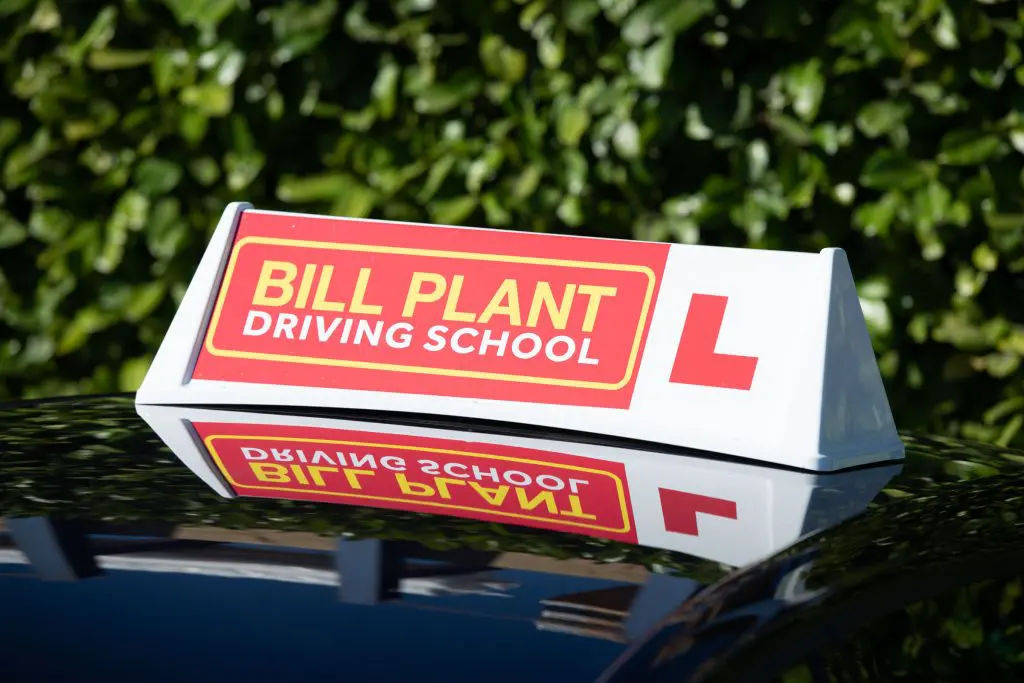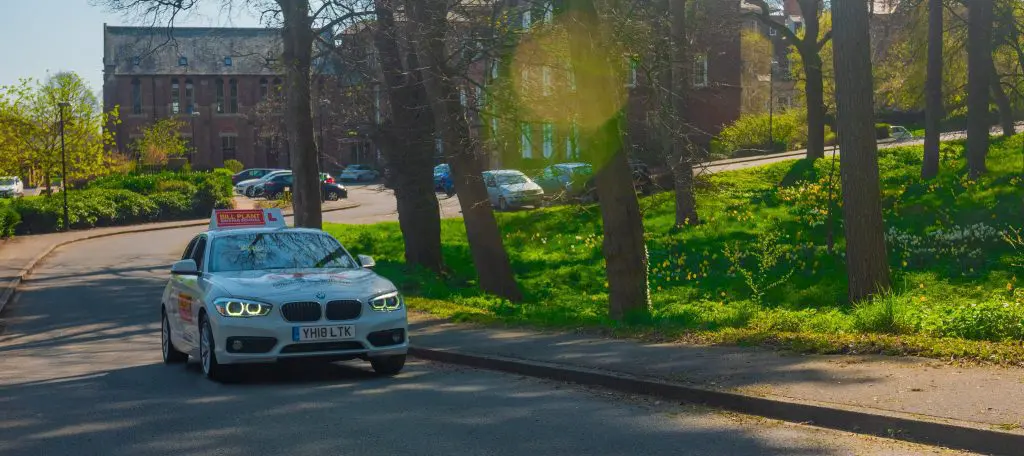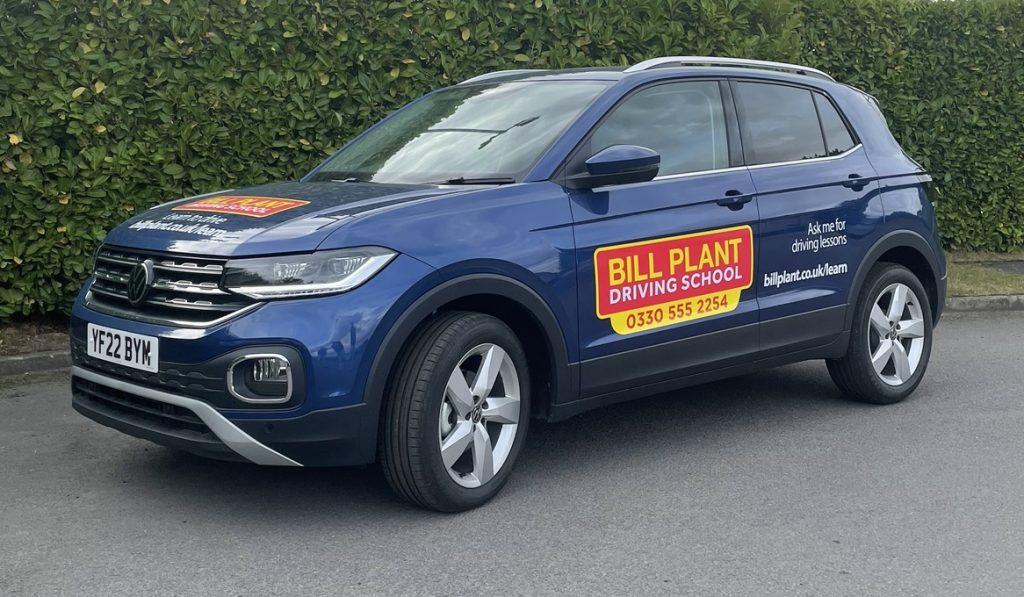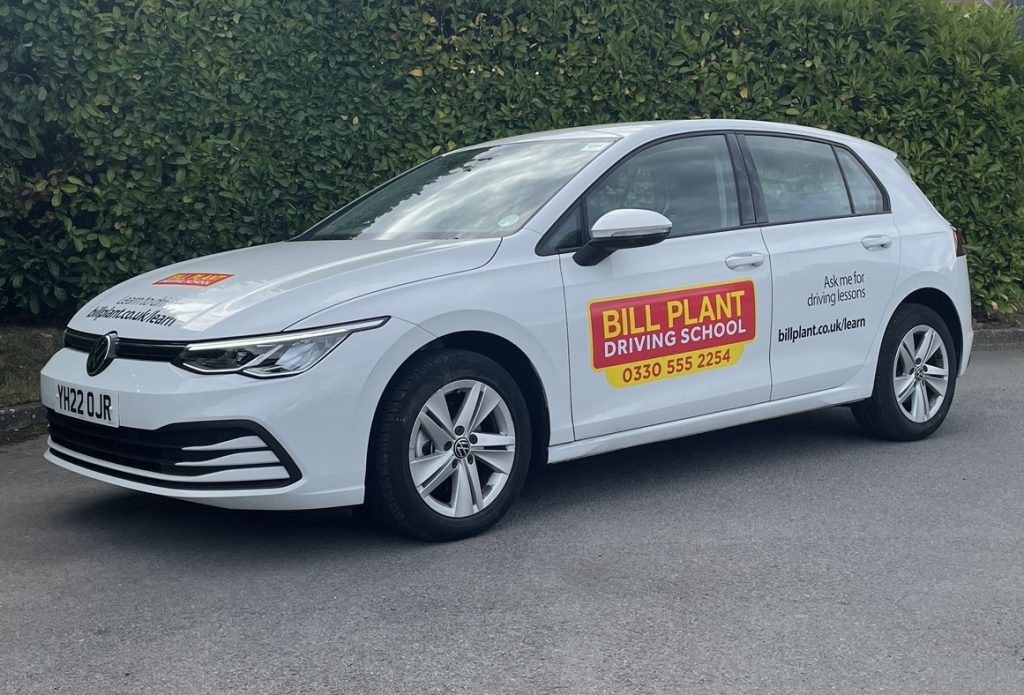When you are a learner driver, you need to let other road users know as much. This is where L-plates come in.
You’ve probably seen them on a number of cars around your neighbourhood, but if you’re not entirely sure what L-plates are, we’re going to help. As you learn to drive, you’ll need to understand how they work, especially if you want to practice.
At Bill Plant Driving School we want to help you learn outside of your driving lessons. So, we’ve put together our ultimate guide to L-plates to help you get behind the wheel of your own car.
What are L-plates

L-Plates are the white square with a red L that you see stuck to cars all over the country. They’re used to show that there’s a learner driver behind the wheel of a car. And, if you’re a learner who wants to learn in your own time, you’ll need one of these plates attached to your car.
Your driving instructor will likely have L-plates attached to their car in a semi-permanent way, like a roof sign, that helps advertise that they’re an instructor. Your own L-plates will probably be temporary though, and you’ll have to attach them each time you want to practice.
Are L-plates a legal requirement?
Yes, L-plates are required by law any time learner drivers with a provisional licence are driving a vehicle. You must display an L-plate anytime you’re driving on a public road, but won’t have to use them if you are learning on private land.
In Wales, you can use L-plates or D-plates.
L-plate rules and legal specifications

Not only do you have to display L-plates but you have to follow a series of rules and guidelines that cover where to put them, their size and what they look like.
An L-plate must:
- Be a 178mm x 178mm square
- Follow the specific layout within the square with exact dimensions
- Be correctly displayed and visible from both the front and back
- Have a red L on a plain white background
- Be kept clean
- Be attached to the car whenever a learner is driving
- Be weather resistant – you can’t just stick a paper square to your car unfortunately
L-Plates in the Republic of Ireland have different criteria and dimensions, so if you are shopping for new learner plates, make sure you are buying ones that match the criteria set out by the DVSA and UK Government.
How many L-plates should you put on a car?
You must display at least 2, to make sure they are visible from the front and back. You need it to be obvious that you are a learner for other drivers on the road.
As you need to make sure they are visible, and L-plates can fall off, we’d recommend you carry a number of spares in your car.
Where to put L-plates
So, to make sure your L-plates are visible from the front and the rear you’ll need to place one at each end of your vehicle. There’s no rule on exactly where, but we’d recommend:
- Placing them at the same height as your number plate, brake lights or headlights
- On a visible portion of your bonnet, as long as your bonnet isn’t too flat
While you can put them on the sides of your car, these will not count as ‘visible’ in the eye of the law.
We would not advise placing L-plates:
- In your windscreen or rear window as it can block your view
- On a bumper low to the ground
- On a flat bonnet
- Over any vents or grills that provide airflow to key parts of your vehicle
- Over your lights
- Over your number plate
What are the penalties for driving without learner plates?

If you are caught breaking any of the legal specifications regarding L-plates, you could face a fine.
Not only that, but you could receive anywhere from 3 to 6 points on your licence, which would not be a good start to life as a driver.
The code you would be breaking is LC20 and refers to an offence of ‘driving otherwise than in accordance with a licence’.
Types of L-plate
While all legal L-plates will be the same size and shape, there are a few different types that you can attach to your car. The type you go for will likely depend on your own personal preference. These are:
- Magnetic L-plates – these are as simple as they sound and are generally the most popular type of L-plate. You just need to make sure the surface is clean and they’ll stick right on and peel off when you need them to. Magnetic plates need to use good quality magnets to make sure they won’t just drop off. They work best on a flat surface.
- Self-adhesive L-plates – An adhesive L-plate is just that. It’s essentially a sticker that isn’t reusable. Once it’s on, you either leave it on or have to use a new one each time. We’d advise only using adhesive plates if the learner is the only person driving the car.
- Self-cling L-plates – A cling plate is designed to stick inside a window. While they may be useful for the back window, they’re generally best avoided so you don’t obscure your view.
Generally, we’d advise using magnetic L-plates and only opting for sticky L-plates if you really have to. In some instances, a magnetic plate may not work on a car due to its shape.
Do you need L-plates for your driving test?
Yes!
Most learner drivers take their driving test in their instructor’s car, which will have L-plates attached. However, if you choose to use a different car you will need to use your own L-plates during the test.
As soon as you’ve passed your driving test, you can rip those L-plates right off though. This is where P-plates come in.
Once you pass your test, you’ll need to be insured. You can find further learner driving information and guides such as learner and new driver insurance, if you can insure a learner drive on your car, and also if you can drive on the motorway as a learner driver.
What’s the difference between red L-plates and green P-plates?
A P-plate is the next stage for learner drivers. Essentially the ‘P’ stands for ‘probation’. In this context, it means that someone has just passed their driving test. They aren’t a legal requirement, but P-plates are a good way for new drivers to let other road users know that they may not be confident drivers.

